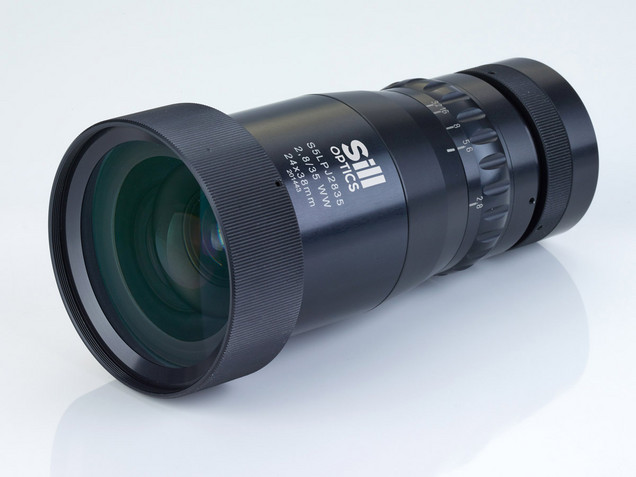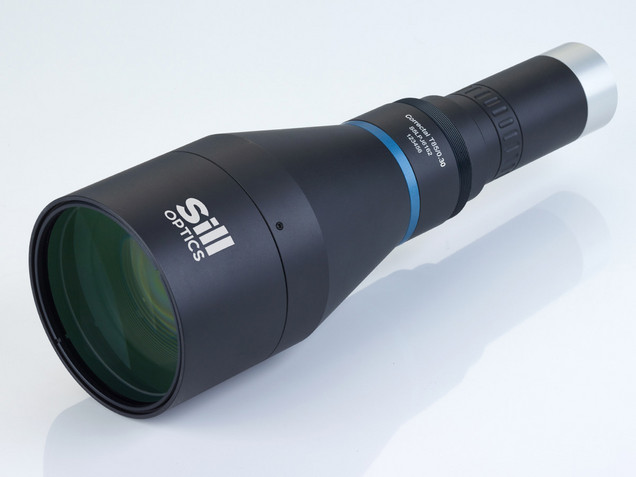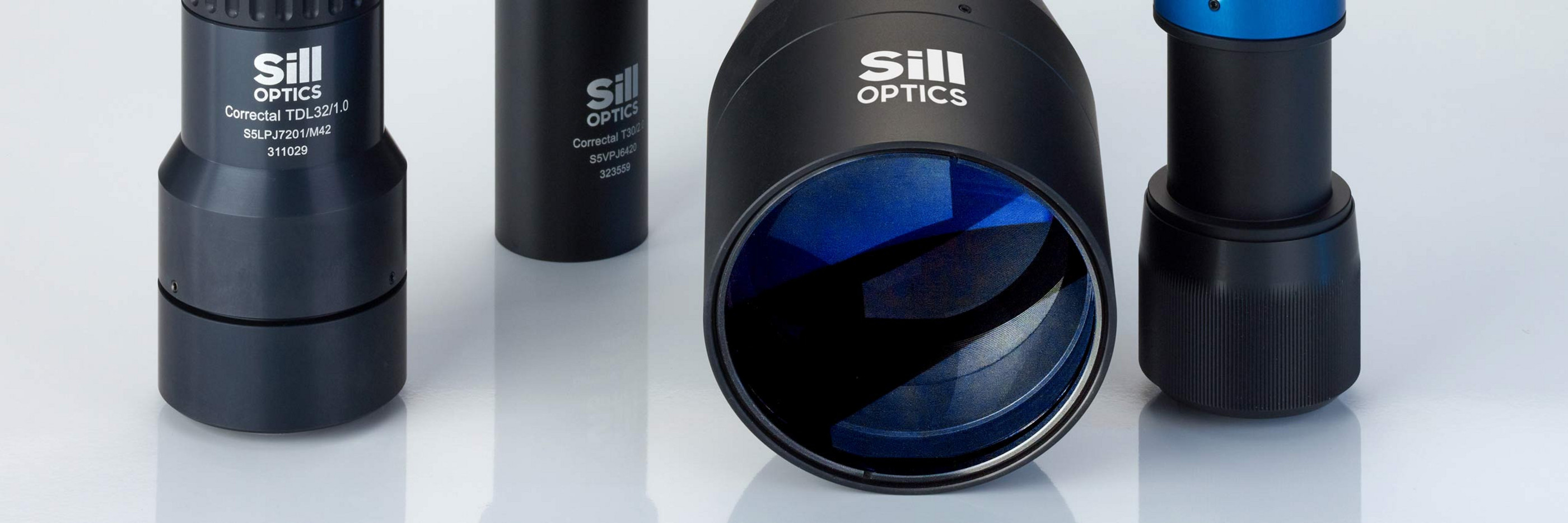Telecentric Portfolio Lenses
Sill Optics has been manufacturing high-end telecentric imaging lenses for many years. These lenses are specifically designed for measurement applications in industrial machine vision, aiming to eliminate magnification changes and measurement deviations caused by depth of field or defocus.
With the increasing data rates and sensor sizes, there is a clear trend towards larger sensor diagonals and smaller pixel sizes. As a result, our lens portfolio focuses on lenses optimized for small pixel sizes, supporting sensors up to 1.5" (with a sensor diagonal of 24.0 mm).
Benefit from our extensive experience and expertise in telecentric imaging lenses. Contact Sill Optics today to discuss your specific requirements and discover the right lens solution for your measurement applications.
What is the difference between telecentric and entocentric lenses?


Telecentric and entocentric imaging lenses are two different types of optical lenses, each with different characteristics and applications. The main difference between them lies in the way they focus light rays and direct them to the image sensor or detector plane:
Telecentric imaging lenses:
Parallel light rays: Telecentric lenses are designed so that the light rays are parallel to the optical axis of the lens and strike the image sensor or detector plane perpendicularly. This means that the rays arrive essentially parallel to the optical axis and have no diverging or converging rays.
Advantages:
This telecentric light path has several advantages, including the elimination of parallax errors, uniform image quality over the entire working area, and the ability to accurately measure objects and distances.
Applications:
Telecentric lenses are commonly used in applications where accurate measurement and inspection are required, such as manufacturing, quality control and dimensional inspection.
Entocentric imaging lenses:
Diverging/converging light beams: Entocentric lenses allow light rays to converge or diverge toward or away from a focal point inside the lens. This means that the light rays are not parallel to the optical axis and diverge or converge as they pass through the lens.
Advantages:
Entocentric lenses are more flexible in terms of depth of field and working distances because they do not meet strict telecentric requirements. This can be advantageous in applications where variable working distances or depth of field are required.
Applications:
Enocentric lenses are often used in applications where telecentric requirements are not as strict or where variable working distances are required. Examples include macro photography, microscopy, and some areas of medical imaging.

We also offer special lenses on request. Read more
What are telecentric lenses with coaxial light coupling?
Telecentric lenses with coaxial light injection are special telecentric lenses designed to introduce the illumination light parallel to the optical axis of the lens. This means that the illumination light comes from the same direction as the image light captured by the camera. This type of illumination is extremely useful in image processing and inspection technology and offers several important advantages:
- Shadow reduction:
- Uniform illumination
- Freedom from distortion
- Precise inspection
- Reduced angle of incidence
Coaxial telecentric lenses can be used in various applications where precise imaging and inspection is required, especially in environments with difficult lighting conditions or when inspecting parts with complex surfaces. They are a powerful option for improving image quality and accuracy in such applications.

Are you looking for customized designs instead?
Telecentric lenses with integrated liquid lens

Lenses with integrated liquid lens use an innovative technology to dynamically adjust the focal length of the lens without requiring physical movement of lens elements. This technology uses a liquid lens that can change shape, and thus focal length, by modulating the refractive properties of the liquid.
The core of the system is the liquid lens itself. This lens consists of a transparent liquid enclosed in a container that has two electrodes. By adjusting the curvature of the liquid lens, the focal length of the lens is dynamically varied. More curvature results in a shorter focal length, while less curvature results in a longer focal length.
Lenses with integrated liquid lens have decisive advantages: The change in focal length can occur very quickly, often in milliseconds. This makes it possible to adapt quickly to changing conditions or requirements. Since no mechanical movements are required, lenses with integrated liquid lens are more compact and lighter than conventional lenses with variable focal length.
Lenses with integrated liquid lens are used in various fields, including medical technology (endoscopy, microscopy), image processing, the automotive industry and other industries where rapid adjustment of the focal length or focus is required.
We offer a perfect solution
You are welcome to test our portfolio lenses in your system. Our lens loan terms may vary depending on specific requirements. Contact our sales team here to request a loan. Or are you looking for special lenses, customized solutions or add-ons?



